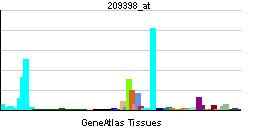Entrez 3006 | Ensembl ENSG00000187837 | |
 | ||
Aliases HIST1H1C, H1.2, H1C, H1F2, H1s-1, histone cluster 1, H1c External IDs MGI: 1931526 HomoloGene: 68455 GeneCards: HIST1H1C | ||
Histone H1.2 is a protein that in humans is encoded by the HIST1H1C gene.
Histones are basic nuclear proteins responsible for nucleosome structure of the chromosomal fiber in eukaryotes. Two molecules of each of the four core histones (H2A, H2B, H3, and H4) form an octamer, around which approximately 146 bp of DNA is wrapped in repeating units, called nucleosomes. The linker histone, H1, interacts with linker DNA between nucleosomes and functions in the compaction of chromatin into higher order structures. This gene is intronless and encodes a member of the histone H1 family. Transcripts from this gene lack polyA tails but instead contain a palindromic termination element. This gene is found in the large histone gene cluster on chromosome 6.
Apart from its roles in the nucleus, histone H1.2 also participates in apoptosis. In response to apoptotic stimuli, mainly DNA damage, it is translocated from the nucleus to the cytosol. There, it activates Bak, a pro-apoptotic protein bound to the mithochondria outer membrane (MOM). Activation of Bak causes the perforation of the mitochondria, a process known as MOMP (mitochondria outer membrane permeabilization) which promotes apoptosis. Histone H1.2 also forms a complex with the apoptosome, possibly regulating its formation.
